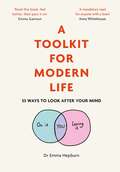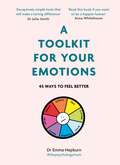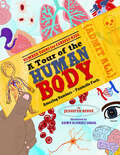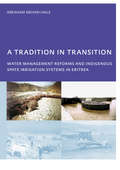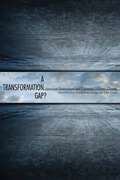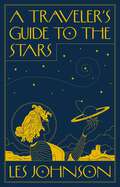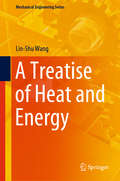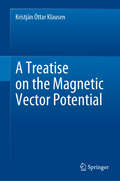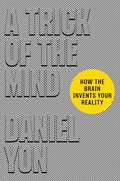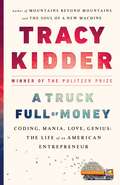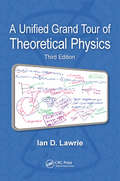- Table View
- List View
A Toolkit for Modern Life: 53 Ways to Look After Your Mind
by Emma Hepburn'Emma has a unique way of cutting through to the heart of the issues we all face day-in-day-out. There isn't another book out there like this and it should be a mandatory read for anyone with a brain.' - Anna Whitehouse, founder of Mother Pukka In this warm, wise book, clinical psychologist Dr Emma Hepburn (Instagram's @thepsychologymum) introduces her proven and practical tools for taking care of your mental and emotional wellbeing every day.Using her trademark illustrations, Dr Hepburn (aka @thepsychologymum) shines a welcome ray of light into the neglected corners of your brain. From identifying what triggers unhappy thoughts to overcoming the fear of making mistakes, A Toolkit for Modern Life will help you to cultivate positive habits and feel more confident, happier and in tune with yourself.* Call out and manage feelings of imposter syndrome* Answer back to your inner critic* Become aware of and monitor your emotional capacity* Spot unhelpful thoughts and develop more helpful patterns of thinking* Understand how the emotions cycle affects you* Identify what triggers anxiety for you and how to intercept it* Overcome the fear of making mistakes* Spot and call out your 'catastrophizing'* Identify and disarm social media comparisons* Align your decisions and actions with your core values* Assemble your own mental health toolkit for life
A Toolkit for Your Emotions: 45 ways to feel better
by Dr Emma HepburnIn A Toolkit for Your Emotions, Emma takes a deep dive into how we feel and explains all the tools you need to intercept and redirect challenging emotion. From joy to anger, shame to stress and anxiety, Emma has practical and effective ways to feel instantly calmer and more content.Each topic is illustrated with Emma's well-loved illustration to make them accessible, meaningful and memorable. Dr Emma Hepburn is the most well-known psychologist on Instagram (@thepsychologymum, 135k followers) and has won numerous awards for her contribution to mental health awareness.
A Topical Approach To Life-span Development, 6th Ed.
by John SantrockConnect with Santrock 6th edition and connect with success. Informed and driven by research. At McGraw-Hill, we have spent thousands of hours with you and your students, working to understand the key needs and concerns you face in Human Development courses. The most common topics raised include managing the vast amount of content inherent to a Lifespan course and ensuring the dependability of the assigned material–is it current and accurate? The result of this research is John Santrock's A Topical Approach to Lifespan Development 6e. Santrock 6e ensures students complete and understand the assigned material in a number of ways. Santrock's hallmark Learning Goals pedagogy provides a comprehensive roadmap to the text material, clearly pointing out the core concepts fundamental to students' learning and performance. An adaptive learning system increases students' efficiency in studying by identifying what they know and don't know and providing in-the-moment guides to learning what they do not. The research and development of the 6th edition indicated that students said that highlighting connections among the different aspects of life-span development would help them to better understand the concepts. This recurring theme of connections–Developmental Connections, Topical Connections, Connecting Development to Life, Connecting with Careers, and Connections through Research–ties together concepts from across chapters to reinforce the learning process and connects the material to students' everyday lives and future aspirations. And the new Milestones video and assessment program helps bring the course material to life, so your students can witness development as it unfolds. And of course, all of this material is informed by our unique board of expert contributors–a who's who of developmental psychology–who ensure the material is as accurate and up-to-date as possible.
A Tour of the Human Body: Amazing Numbers--Fantastic Facts (Number Tours for Curious Kids)
by Jennifer BerneJennifer Berne takes children on a tour of the human body to reveal the wonders of how it works -- with some astonishing numbers and fascinating facts along the way.From our eyes to our toes, kids will find out what makes the human body tick. They&’ll discover that our hearts beat 100,000 times a day, which equals 36 MILLION times a year. And that our tongue&’s 8,000 taste buds can detect only 5 flavors. And that we have 60,000 miles of blood vessels, enough to circle the world more than twice!With such remarkable facts and numbers, and vivid informative illustrations by Dawn DeVries Sokol, this book takes your child on an entertainingly educational journey through the wonders of the human body.
A Tour of the Senses: How Your Brain Interprets the World
by John M. Henshaw2012 Outstanding Academic Title, Choice MagazineEver wonder why some people have difficulty recognizing faces or why food found delicious in one culture is reviled in another? John M. Henshaw ponders these and other surprising facts in this fascinating and fast-paced tour of the senses.From when stimuli first excite our senses to the near-miraculous sense organs themselves to the mystery of how our brain interprets senses, Henshaw explains the complex phenomena of how we see, feel, taste, touch, and smell. He takes us through the rich history of sensory perception, dating back to Aristotle’s classification of the five main senses, and helps us understand the science and technology behind sensory research today.A Tour of the Senses travels beyond our human senses. Henshaw describes artificial sensing technologies and instruments, unusual sensory abilities of the animal kingdom, and techniques for improving, rehabilitating, and even replacing sense organs. This entertaining introduction to sensory science is a clever mix of research findings and real-world stories that helps us understand the complex processes that turn sensory stimuli into sophisticated brain responses.
A Tour of the Senses: How Your Brain Interprets the World
by John M. Henshaw“A blend of research findings and real-world anecdotes about people’s sensory experiences enlivens this historical view of the science behind perception.” —Science NewsEver wonder why some people have difficulty recognizing faces or why food found delicious in one culture is reviled in another? John M. Henshaw ponders these and other surprising facts in this fascinating and fast-paced tour of the senses.From when stimuli first excite our senses to the near-miraculous sense organs themselves to the mystery of how our brain interprets senses, Henshaw explains the complex phenomena of how we see, feel, taste, touch, and smell. He takes us through the rich history of sensory perception, dating back to Aristotle’s classification of the five main senses, and helps us understand the science and technology behind sensory research today.A Tour of the Senses travels beyond our human senses. Henshaw describes artificial sensing technologies and instruments, unusual sensory abilities of the animal kingdom, and techniques for improving, rehabilitating, and even replacing sense organs.This entertaining introduction to sensory science is a clever mix of research findings and real-world stories that helps us understand the complex processes that turn sensory stimuli into sophisticated brain responses.“A Tour of the Senses is a fun book, which may be of interest to anyone who’s ever wondered how the eye or ear works.” —American Journal of Human Biology
A Tradition in Transition, Water Management Reforms and Indigenous Spate Irrigation Systems in Eritrea: PhD, UNESCO-IHE Institute for Water Education, Delft, The Netherlands
by Abraham Mehari HaileA Tradition in Transition presents an in-depth assessment of the century-old Wadi Laba indigenous spate irrigation system in Eritrea. This system has relied on earthern and brushwood structures and customary water rules to support subsistence livelihoods of the Wadi Laba communities for many years. The book presents original research, which analyzes the effectiveness of contemporary water laws and a new headwork in improving production and standard of living. It also compares the lack of success of these new approaches with traditional methods of water management.
A Trajectory Description of Quantum Processes. II. Applications: A Bohmian Perspective (Lecture Notes in Physics #831)
by Ángel S. Sanz Salvador Miret-ArtésTrajectory-based formalisms are an intuitively appealing way of describing quantum processes because they allow the use of "classical" concepts. Beginning as an introductory level suitable for students, this two-volume monograph presents (1) the fundamentals and (2) the applications of the trajectory description of basic quantum processes. This second volume is focussed on simple and basic applications of quantum processes such as interference and diffraction of wave packets, tunneling, diffusion and bound-state and scattering problems. The corresponding analysis is carried out within the Bohmian framework. By stressing its interpretational aspects, the book leads the reader to an alternative and complementary way to better understand the underlying quantum dynamics.
A Transformation Gap?
by Theo Farrell Terriff Terry Osinga FransThis study, edited by Terriff (American security policy, U. of Calgary, Canada), Osinga (war studies, Royal Netherlands Military Academy) and Farrell (war studies, King's College London, UK), examines the extent to which there are gaps in the military transformation being led by the United States between various European members of the North Atlantic Treaty Organization. Case studies are presented for Britain, France, Germany, Spain, the Netherlands, and Poland. The case studies follow a common analytical framework that breaks transformation down into network-enablement, effects based operations, and expeditionary warfare and, for each of these, in terms of their respective technological, doctrinal, and organizational elements. These elements are further considered in light of the scholarly literature on military innovation, norm diffusion, and alliance theory. Stanford Security Studies is an imprint of Stanford University Press. Annotation ©2011 Book News, Inc. , Portland, OR (booknews. com)
A Traveler’s Guide to the Stars
by Les JohnsonA brief guide to the real science of interstellar travelWith known exoplanets now numbering in the thousands and initiatives like 100 Year Starship and Breakthrough Starshot advancing the idea of interstellar travel, the age-old dream of venturing forth into the cosmos and perhaps even colonizing distant worlds may one day become a reality. A Traveler&’s Guide to the Stars reveals how.Les Johnson takes you on a thrilling tour of the physics and technologies that may enable us to reach the stars. He discusses the latest exoplanet discoveries, promising interstellar missions on the not-so-distant horizon, and exciting new developments in space propulsion, power, robotics, communications, and more. But interstellar travel will not be easy, and it is not for the faint of heart. Johnson describes the harsh and forbidding expanse of space that awaits us, and he addresses the daunting challenges—both human and technological—that we will need to overcome in order to realize tomorrow&’s possibilities.A Traveler&’s Guide to the Stars is your passport to the next great frontier of human discovery, providing a rare inside look at the remarkable breakthroughs in science and technology that will help tomorrow&’s space travelers chart a course for the stars.
A Treasure of Measures
by Mike DownsThere are so many little life moments to measure—and so many creative ways to measure them!How do you measure how long it takes to read a good book? Sure, you can use units of time, like minutes or hours . . . but you can also use your very own measurements: how many times you laugh or cry, how many pages you turn, or how many times you ask to read it again. And measuring rainfall could mean using decibels of sound . . . or how many people you see opening umbrellas. This playful picture book introduces young readers to different units of measurement, then invites them to think of creative ways to quantify the meaningful moments in their lives. The possibilities are as limitless as the imagination!ENCOURAGES CURIOSITY: Every kid loves to count, measure, and quantify—even when the things they’re examining seem immeasurable at first glance! This nonfiction picture book encourages kids’ natural inclinations toward scientific thinking and their boundless imaginations, modeling unique ways to measure everything from the distance covered on a road trip to the brightness of stars and more!CELEBRATES SEEING AND EXPERIENCING: This charmingly illustrated book is a celebration of what is special about every day, no matter how small those moments may seem. Measuring is one way to really take in a new experience, after all. Kids will embrace the concept and the fun!ENGAGING READ-ALOUD: This picture book’s accessible rhyme, engaging content, and spirited illustrations make it a delightful read-aloud for classroom or family enjoyment.A SWEET GIFT BOOK: A meaningful message and adorable illustrations make this a go-to gift and an ideal addition to a child's library.Perfect for:Parents, grandparents, and caregivers of curious kidsLibrarians and teachers seeking engaging nonfiction books with STEM or STEAM contentAnyone seeking a distinctive gift that encourages imagination, creativity, and playBirthday, holiday, summer reading, or moving-up ceremony gift
A Treatise of Heat and Energy (Mechanical Engineering Series)
by Lin-Shu WangThis textbook explains the meaning of heat and work and the definition of energy and energy systems. It describes the constructive role of entropy growth and makes the case that energy matters, but entropy growth matters more. Readers will learn that heat can be transferred, produced, and extracted, and that the understanding of generalized heat extraction will revolutionize the design of future buildings as thermal systems for managing low grade heat and greatly contribute to enhanced efficiency of tomorrow’s energy systems and energy ecosystems. Professor Wang presents a coherent theory-structure of thermodynamics and clarifies the meaning of heat and the definition of energy in a manner that is both scientifically rigorous and engaging, and explains contemporary understanding of engineering thermodynamics in continuum of its historical evolution. The textbook reinforces students’ grasp of concepts with end-of-chapter problems and provides a historical background of pioneering work by Black, Laplace, Carnot, Joule, Thomson, Clausius, Maxwell, Planck, Gibbs, Poincare and Prigogine.Developed primarily as a core text for graduate students in engineering programs, and as reference for professional engineers, this book maximizes readers’ understanding and shines a light on new horizons for our energy future.
A Treatise on Corrosion Science, Engineering and Technology (Indian Institute of Metals Series)
by Radhakrishna G. Pillai U. Kamachi Mudali Toleti Subba Rao S. Ningshen Rani P. George T. M. SridharThis volume elaborates on various corrosion processes in different applications and their prevention strategies. It comprehensively covers the principles of corrosion, engineering issues, methods of corrosion protection and defines corrosion processes and control in select aggressive end industrial environments. The contents especially focus on corrosion issues in nuclear, aerospace, marine, high temperature, bioimplants, automobile, and addresses the application of advanced materials to mitigate them. A special section on corrosion prevention strategies with innovative solutions to resolve corrosion issues in various environments is the highlight of this book. This volume will be a useful guide for those in research, academia and industry, particularly to know state of art in corrosion control and prevention for various practical applications.
A Treatise on the Magnetic Vector Potential
by Kristján Óttar KlausenThe connection between the electric and magnetic fields is fundamental to our understanding of light as electromagnetic waves. The magnetic vector potential lies at the heart of this relation. The idea emerged in the early days of research in electromagnetism but was dismissed for more than half a century until the formulation of quantum electrodynamics. The magnetic vector potential is a pivotal concept with ties to many aspects of physics and mathematics. This book unravels the nature of the magnetic vector potential, highlights its connection to quantum mechanics and superconductivity, and explores the analogy with hydrodynamics.
A Tree is a Time Machine
by Rob SearsSlow down and see the big picture in this warm, witty and beautifully illustrated book for children and adults inviting us to wonder at our precious time on Earth.You are invited to travel through the ages in the company of a 4,000-year-old yew tree named Eunice, whose perspective on time is very different from our own. Her wisdom will get you pondering: why is humanity in such a rush lately? Why does time fly and sometimes drag? And how can the actions of one generation change things for those who follow?Guiding you on a journey from the extremely long past to the head-spinning present and the unshaped future, Eunice reminds us that in a world that seems to be travelling at warp speed, taking your time is sometimes the best thing you can do. After all, some of the most important things in life can't be sped up. A Tree is a Time Machine is an antidote to uncertain times, and the perfect gift for anyone who has ever felt like they just want the world to slow down.By the authors of The Biggest Footprint, winner of the James Cropper Wainwright Prize for Children's Nature Writing 2022.
A Trick of the Mind: How the Brain Invents Your Reality
by Daniel YonFrom a groundbreaking neuroscientist, a book that will reshape the way we understand how our brain perceives the world around us—for readers of Adam Grant's Think Again and Lisa Genova's Remember. How does your brain decide what it's seeing, from the physical world to other people? For decades, scientists have tried to understand how our brains work, not realizing that the answer lies much closer to home. New research in neuroscience and psychology suggests that the brain is doing the same thing that the scientists are: using past experiences to build theories of how the world works, and using these models to predict and make sense of it. Through this process, your brain constructs the reality that you live in. Daniel Yon takes the research one step further, uncovering how your brain colors your perception of the world, the judgements you make about other people, and the beliefs you form about yourself. These mental processes help us navigate the world—but can also lead us astray, causing us to believe outlandish conspiracy theories or to see things that aren&’t really there. By understanding the ways each of our brains construct our realities, we can better engage with other communities and make more informed approaches about mental illness. With cutting-edge research and transformative practical applications, A Trick of the Mind will revolutionize the way you think.
A Trip Through the Body
by Laurie BlakeIs your child fascinated with the way the human body works? Do you have a budding junior biologist or doctor who's eager to learn more? DK Adventures: A Trip through the Body is a wonderful way to teach children about the human body through pictures and story. Through a combination of interesting storytelling and pictures, DK Adventures: A Trip through the Body is a great way for both avid readers and visual learners to learn more about the human body. In this story, Dan and Mya win a science competition and are given the opportunity to experience a tour of the human body. Using exciting new technology that allows them to travel through the body as if they're shrunk, they explore the systems of the human body, get propelled around by the blood stream, and are hurtled through windpipes and through the digestive system. They must navigate around the liver and escape from white blood cells in the bone marrow and into muscles. They're even propelled up the spinal cord in this story that will captivate children while teaching them more about the human body. DK Adventures is a book series that reluctant readers can enjoy as much as bookworms do! This series combines captivating, fictional stories with nonfiction facts to encourage learning and engagement in your child. The stories keep children interested, and the facts teach critical skills and knowledge — the fiction and nonfiction elements work together to keep each child's interest high, to build knowledge, and to enrich the narrative reading experience with fascinating background information. These books are filled with information, but the stories make them incredibly readable. DK Adventures are available in a range of kid-friendly topics, including dinosaurs, cars, and the human body, and each book supports Common Core State Standards and literacy skills.
A Trip into Space
by Lori Haskins Houran Francisca MarquezA lively, rhythmical story and detailed illustrations take readers on a trip to the International Space Station, where astronauts work, sleep, and walk in space! This great read-aloud includes the latest information (verified by NASA staff) about the ISS. Fact-filled and fun, this story will send young minds soaring.This is a fixed-format ebook, which preserves the design and layout of the original print book.
A Troop of Kangaroos: A Book of Animal Group Names
by Lisa MundorffA party of jays, a parade of elephants, a stench of skunks, and so many more make up this delightfully funny and informative picture book about animal group names! Packed with vibrant art, young readers will not only learn what we call certain groups of animals, but it will tickle them with literal images. That party of jays? Those birds have party hats and streamers galore! A Troop of Kangaroos is early nonfiction that will entertain and teach.
A Troublesome Inheritance
by Nicholas WadeDrawing on startling new evidence from the mapping of the genome, an explosive new account of the genetic basis of race and its role in the human story Fewer ideas have been more toxic or harmful than the idea of the biological reality of race, and with it the idea that humans of different races are biologically different from one another. For this understandable reason, the idea has been banished from polite academic conversation. Arguing that race is more than just a social construct can get a scholar run out of town, or at least off campus, on a rail. Human evolution, the consensus view insists, ended in prehistory. Inconveniently, as Nicholas Wade argues in A Troublesome Inheritance, the consensus view cannot be right. And in fact, we know that populations have changed in the past few thousand years--to be lactose tolerant, for example, and to survive at high altitudes. Race is not a bright-line distinction; by definition it means that the more human populations are kept apart, the more they evolve their own distinct traits under the selective pressure known as Darwinian evolution. For many thousands of years, most human populations stayed where they were and grew distinct, not just in outward appearance but in deeper senses as well. Wade, the longtime journalist covering genetic advances for The New York Times, draws widely on the work of scientists who have made crucial breakthroughs in establishing the reality of recent human evolution. The most provocative claims in this book involve the genetic basis of human social habits. What we might call middle-class social traits--thrift, docility, nonviolence--have been slowly but surely inculcated genetically within agrarian societies, Wade argues. These "values" obviously had a strong cultural component, but Wade points to evidence that agrarian societies evolved away from hunter-gatherer societies in some crucial respects. Also controversial are his findings regarding the genetic basis of traits we associate with intelligence, such as literacy and numeracy, in certain ethnic populations, including the Chinese and Ashkenazi Jews. Wade believes deeply in the fundamental equality of all human peoples. He also believes that science is best served by pursuing the truth without fear, and if his mission to arrive at a coherent summa of what the new genetic science does and does not tell us about race and human history leads straight into a minefield, then so be it. This will not be the last word on the subject, but it will begin a powerful and overdue conversation.
A Troublesome Inheritance: Genes, Race and Human History
by Nicholas WadeDrawing on startling new evidence from the mapping of the genome, an explosive new account of the genetic basis of race and its role in the human story Fewer ideas have been more toxic or harmful than the idea of the biological reality of race, and with it the idea that humans of different races are biologically different from one another. For this understandable reason, the idea has been banished from polite academic conversation. Arguing that race is more than just a social construct can get a scholar run out of town, or at least off campus, on a rail. Human evolution, the consensus view insists, ended in prehistory.Inconveniently, as Nicholas Wade argues in A Troublesome Inheritance, the consensus view cannot be right. And in fact, we know that populations have changed in the past few thousand years--to be lactose tolerant, for example, and to survive at high altitudes. Race is not a bright-line distinction; by definition it means that the more human populations are kept apart, the more they evolve their own distinct traits under the selective pressure known as Darwinian evolution. For many thousands of years, most human populations stayed where they were and grew distinct, not just in outward appearance but in deeper senses as well.Wade, the longtime journalist covering genetic advances for The New York Times, draws widely on the work of scientists who have made crucial breakthroughs in establishing the reality of recent human evolution. The most provocative claims in this book involve the genetic basis of human social habits. What we might call middle-class social traits--thrift, docility, nonviolence--have been slowly but surely inculcated genetically within agrarian societies, Wade argues. These "values" obviously had a strong cultural component, but Wade points to evidence that agrarian societies evolved away from hunter-gatherer societies in some crucial respects. Also controversial are his findings regarding the genetic basis of traits we associate with intelligence, such as literacy and numeracy, in certain ethnic populations, including the Chinese and Ashkenazi Jews.Wade believes deeply in the fundamental equality of all human peoples. He also believes that science is best served by pursuing the truth without fear, and if his mission to arrive at a coherent summa of what the new genetic science does and does not tell us about race and human history leads straight into a minefield, then so be it. This will not be the last word on the subject, but it will begin a powerful and overdue conversation.From the Trade Paperback edition.
A Truck Full of Money: One Man's Quest to Recover from Great Success
by Tracy Kidder"A perfectly executed, exquisitely reported parable of the Internet age and the wild, mad adventure that is start-up culture."--Charles Duhigg Fortune, mania, genius, philanthropy--the bestselling author of Mountains Beyond Mountains gives us the inspiring story of Paul English, the founder of Kayak.com and Lola. Tracy Kidder, the "master of the nonfiction narrative" (The Baltimore Sun) and author of the bestselling classic The Soul of a New Machine, now tells the story of Paul English, a kinetic and unconventional inventor and entrepreneur, who as a boy rebelled against authority. Growing up in working-class Boston, English discovers a medium for his talents the first time he sees a computer. As a young man, despite suffering from what would eventually be diagnosed as bipolar disorder, he begins his pilgrim's journey through the ups and downs in the brave new world of computers. Relating to the Internet as if it's an extension of his own mind, he discovers that he has a talent for conceiving innovative enterprises and building teams that can develop them, becoming "a Pied Piper" of geeks. His innovative management style, success, and innate sense of fair play inspire intense loyalty. Early on, one colleague observes: "Someday this boy's going to get hit by a truck full of money, and I'm going to be standing beside him." Yet when English does indeed make a fortune, when the travel website Kayak is sold for almost two billion dollars--the first thing he thinks about is how to give the money away: "What else would you do with it?" The second thing he thinks is, What's next? With the power of a consummate storyteller, Tracy Kidder casts a fresh, critical, and often humorous eye on the way new ideas and new money are reshaping our culture and the world. A Truck Full of Money is a mesmerizing portrait of an irresistibly endearing man who is indefatigable, original, and as unpredictable as America itself. Advance praise for A Truck Full of Money"A perfectly executed, exquisitely reported parable of the Internet age, and the wild, mad adventure that is start-up culture."--Charles Duhigg "A Truck Full of Money brings us into unknown spaces of the complex workings of the mind--of a brilliant software engineer, of this new decade, of the brutal/fast business of technology, of stunning privilege, and of one man's efforts to put his fortune to humane use."--Adrian Nicole LeBlanc"The story of [an] entrepreneur's remarkable life [and] the new American economy and the technological world that built it. More engrossing work from a gifted practitioner of narrative nonfiction."--Kirkus ReviewsFrom the Hardcover edition.
A Tutorial on the WKB Approximation for Innovative Dirac Materials: Graphene and Beyond (Springer Tracts in Modern Physics #292)
by Andrii IurovThis textbook serves to supplement existing quantum mechanics courses with the WKB (Wentzel–Kramers–Brillouin) theory for recently discovered Dirac materials, such as graphene, a dice lattice, and alpha-T3 materials. This includes finding the semiclassical wave function, coordinate-dependent momentum, semiclassical action, the complete set of transport equations, and applicability conditions for the approximation. The discovery of graphene and its unique electronic behavior has transformed research in condensed matter physics over the last 10-15 years, but core curriculum in standard graduate-level physics courses still does not reflect these new developments and this book intends to close this gap. With a clear focus on various types of Dirac Hamiltonians, the multidimensional theory is only a small part of the book. The derivation of the WKB equations for novel Dirac materials and their applications to electron tunneling, turning points and classically forbidden regions, resonances and localized states, and many other crucial physical problems are methodically presented. This textbook aims to expand the existing approach to presenting the WKB approximation and covers recent developments in its applications. This book also includes many informative graphics, as well as problems and exercises with hints at the end of each chapter. Additional detailed mathematical derivations, as well as code in Mathematica, are added throughout the whole book. Ideal for graduate students and researchers in condensed matter physics, this textbook serves as a modern guide for learning the WKB theory.
A Unified Grand Tour of Theoretical Physics
by Ian D. LawrieA Unified Grand Tour of Theoretical Physics invites its readers to a guided exploration of the theoretical ideas that shape our contemporary understanding of the physical world at the fundamental level. Its central themes, comprising space-time geometry and the general relativistic account of gravity, quantum field theory and the gauge theories of
A Universe Big & Small: A Story About Carl Sagan
by James YangGeisel Award–winning creator James Yang explores the mysteries of the universe, inspired by the work of lauded astronomer Carl Sagan.When Carl stared out the window, he had many questions.Astronomer and scientist Carl Sagan loved asking questions—he wanted to learn about everything from the smallest atoms to the vastness of the galaxy. And by using his imagination and allowing himself to dream up questions big and small, he inspired others to keep exploring the mysteries of the universe and our place in it.Geisel Award-winning author and illustrator James Yang invites readers on a fantastic journey through the cosmos, inspired by the life and work of Carl Sagan.
